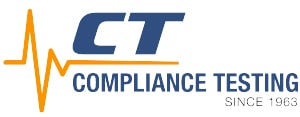Get Free Help From Our Engineers With FCC Part 15 Compliance
Need help complying with FCC Part 15? We work with businesses and individuals across the country, including in , to achieve compliance with Part 15 and other FCC regulations.
Click the “Talk to Our Team” button or call us on 866-540-5287 to ask our engineers your question about Part 15 compliance for your Class A or Class B device, or request a free quote for testing and achieving FCC authorization for your device.

FCC Class A emissions refer to any radio frequency energy that’s produced by Class A devices — electronic and/or digital devices that are used in commercial or industrial settings.
If you’re a solo inventor or a member of a company that focuses on designing electronic devices and equipment, you’ll need to familiarize yourself with the Federal Communications Commission (FCC) Title 47 regulations.
These regulations, which are extensive, provide regulatory guidance on the maximum levels of RF radiation that can be emitted by electronic devices. The FCC requires device manufacturers to keep RF radiation in check to produce devices that are safe to use in appropriate settings.
The FCC’s guidelines differentiate between Class A and Class B devices and provide different limits for each device type. If your device falls under Class A, it’s important to be aware of the guidelines for this class and ensure your device is compliant.
Below, we’ve described what Class A emissions are, as well as what you need to know if your device is subject to FCC regulations as a Class A device.
For more information, or to request a quote for testing your device, reach out to our team online or call us on 866-540-5287
What Are FCC Class A Emissions?
As part of FCC Title 47, the FCC has established regulations to ensure that electronic devices don’t emit electromagnetic interference that could interfere with other devices or systems.
Class A emissions are produced by electronic equipment and devices designed for use in an industrial or commercial environment. Class B emissions, on the other hand, refer to devices and other electronic products designed for use in residential environments.
RF emissions standards for Class A devices are less restrictive than for Class B devices, as the FCC understands that commercial and industrial environments usually have fewer RF-sensitive devices than a person’s home.
Examples of FCC Class A Devices
Under FCC rules, most electronic and digital devices used in industrial and commercial settings are classified as Class A devices. Examples include:
- Commercial/industrial telecommunications equipment, such as devices used in cell towers, satellite communications and other communications infrastructure.
- Commercial-grade security systems, such as surveillance cameras, alarms and access control systems used in business environments.
- Commercial point-of-sale systems, such as cash registers and other equipment used in a retail or other commercial setting.
- Industrial computers and servers, such as factory and construction site computers, as well as computer servers used in data centers.
- Industrial machinery, such as control systems for controlling processes, equipment in assembly line settings and industrial robots.
- Lab equipment, such as chromatographs, centrifuges, spectrometers, biosafety devices and other equipment used in laboratories.
FCC Class A vs. Class B Emissions Standards
Because they’re designed for use in commercial and/or industrial settings, Class A devices are permitted to have higher levels of radiated emissions. These environments have less potential for interference with residential electronic equipment.
Class B emissions standards are more stringent. Devices in this class are intended for use in a residential setting.
The rationale behind the stricter standards for Class B emissions is that home devices are more likely to interfere with radio or television reception — as well as other electronic devices, such as personal computers — if they output an excessive amount of emissions.
How to Comply with Class A Emission Requirements
If you’re developing a digital device for a commercial or industrial market, it’s important to make sure that it complies with Class A emissions standards.
Failing to comply with FCC Class A emissions standards can put you at risk of being subject to monetary fines, a cease and desist order from the FCC removing your product from the market, or the requirement to recall your products.
The good news is that complying with Class A emissions requirements isn’t a complex process.
You can achieve compliance with Class A emissions requirements by having your device tested by an accredited testing lab.
As specialists in FCC testing, we’ve helped hundreds of manufacturers achieve compliance for their Class A and Class B devices. Our team can walk you through the process and give you a quote for your project.
We can also help you to overcome issues that may affect compliance, such as excessive levels of emissions.
Contact Us Now for FCC Testing & Compliance Help
As an industry leader in the field of emissions testing for Class A devices, we’ve helped many manufacturers in the US and internationally ensure compliance with the FCC’s standards and successfully bring their products to market.
We’re highly experienced with both the technical side of compliance testing and the paperwork, allowing us to expedite the process for your device and help you start selling quickly.
If your device is non-compliant, we can also provide insight on how to modify your products in order to reduce EMI and achieve full FCC compliance.
To talk to our team, request a quote for your device, or learn more about the process of testing and compliance with FCC regulations, contact us online or call our team on 866-540-5287.
Request a Free Quote From Our Team
Please enter your name, contact information, and any information about your device and the type of testing you need into the form below. Our team of engineers and compliance specialists will contact you as soon as possible with a free quote for your project.




